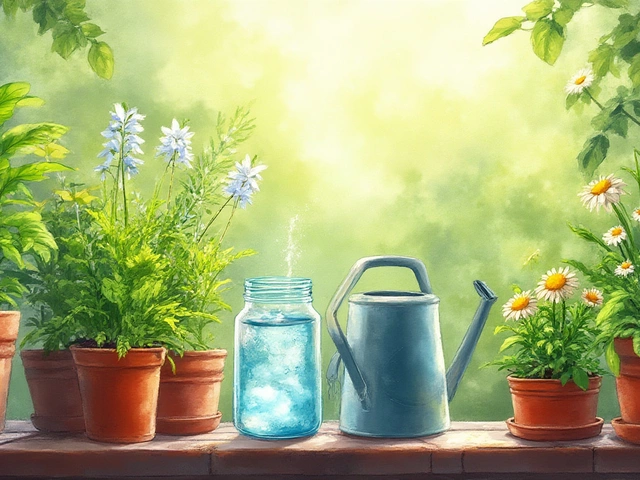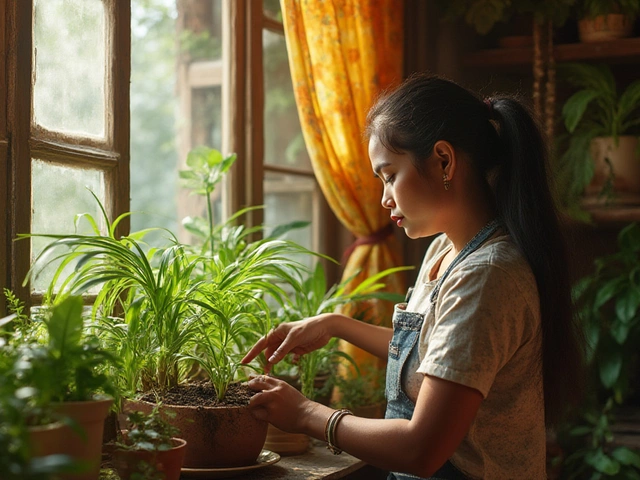Lucky Flowers in India: Choose the Best for Good Fortune
If you believe a splash of colour can bring luck, you’re not alone. Indian households have long trusted certain flowers to invite prosperity, health, and happiness. Below we break down the top lucky flowers, when to plant them, and easy care tricks so you can start reaping good vibes right away.
Top Five Lucky Flowers and What They Symbolise
1. Marigold (Tagetes) – Known as genda in Hindi, marigold is a staple at festivals and weddings. Its bright orange hue is said to drive away negativity and welcome wealth. Plant it in sunny spots; it thrives in well‑drained soil and needs only occasional watering.
2. Lotus (Nelumbo nucifera) – The lotus stands for purity and spiritual growth. It’s a favorite for ponds and water gardens. It prefers stagnant water at least 30 cm deep and a sunny location. Even a small container pond can host a lotus, bringing calm and good luck.
3. Jasmine (Jasminum) – Jasmine’s sweet fragrance is linked to love and positive energy. Traditional Indian homes often keep jasmine vines near entryways. It likes a warm climate and well‑aerated soil; water it weekly during summer.
4. Tulsi (Ocimum sanctum) – Often called holy basil, Tulsi is revered for health and protection. A pot of Tulsi on a windowsill is believed to cleanse the air and invite blessings. It needs partial sun and regular misting to keep the leaves lush.
5. Rose (Rosa) – Red roses symbolize love and success, while pink roses represent gratitude. In many Indian rituals, roses are offered to deities. Plant roses in loamy soil, give them at least six hours of sunlight, and prune dead blooms to encourage new growth.
How to Use Lucky Flowers in Your Space
Start by choosing a spot that matches each flower’s sunlight needs. For small apartments, potted marigolds or jasmine work great on balconies. If you have a garden, consider a dedicated lotus pond or a Tulsi corner near the kitchen.
When arranging cut flowers for rituals, combine marigold and rose for a balanced mix of prosperity and love. Adding a few jasmine sprigs to your doorway can freshen the air and keep negative vibes at bay.
Don’t forget soil health. A simple mix of compost, garden soil, and sand (2:1:1) gives most lucky flowers the nutrients they need. Mulching with dry leaves or coconut husk helps retain moisture, especially for marigold and rose.
Watering schedule matters too. Over‑watering can drown roots, while under‑watering stresses the plant and reduces its symbolic power. A good rule of thumb: water when the top inch of soil feels dry.
Finally, involve family members in planting. The act of nurturing a lucky flower together amplifies its positive energy, according to traditional beliefs. Share stories about each flower’s meaning to keep the cultural connection alive.
By picking the right lucky flower and giving it simple, consistent care, you’ll not only brighten your home but also invite the good fortune many Indians have trusted for generations. Ready to bring some lucky blossoms into your life? Start with a marigold pot today and watch the positivity grow.
Which Is the Luckiest Flower in India? Discover Spiritual and Cultural Wonders
Explore India’s most cherished lucky flower, uncover ancient traditions, surprising science, and practical ways to invite luck and positivity with flowers.
About
Flower Gardening
Latest Posts


What Flower Will Bloom All Summer Long? Top Picks for Hot Indian Months
By Alden Thorne May 18, 2025

Best Liquid to Water Plants: What Actually Works?
By Alden Thorne May 9, 2025

How Long to Let Tap Water Sit Before Watering Plants for Healthy Growth
By Alden Thorne Jul 18, 2025

